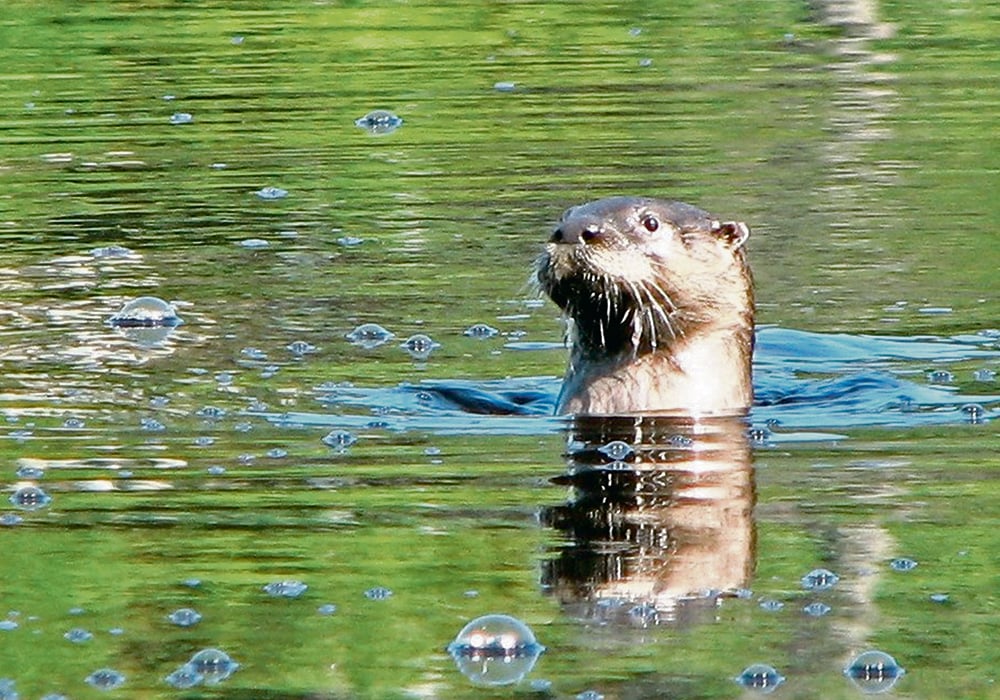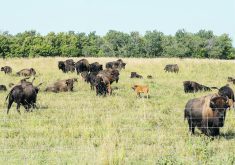River otters may be found in reasonably clear lakes and rivers that provide a plentiful supply of fish and other food
I was sitting on our family’s cottage dock a few weeks ago, drinking coffee and tending a line in hopes of fish for breakfast. I spotted an otter at the end of the bay, fishing for its own morning meal.
I watched as it disappeared underwater for two minutes or more at a time. Eventually, it became clear that it was moving in my direction.
To my delight, it popped up about five metres away. Unaware of me, it took a breath, then dove back into the inky waters with a graceful arcing motion and tail flip. In that moment, I couldn’t help but think how cool it would be to swim like an otter.
Read Also

VIDEO: Bittersweet harvest for this family farmhand
Bruce Burnett helps his brother harvest wheat and canola for the last time on the family farm in Manitoba where they both grew up.
While members of the otter family can be found across the world, our local species, the river otter, is only found in North America. It ranges from southern deserts all the way up to the tree line of northern Canada.
Manitoba’s otters may be found in reasonably clear lakes and rivers that boast a good supply of fish and other food. They’ve been relatively rare for decades in more developed areas like the southwest, but seem to be making a comeback.
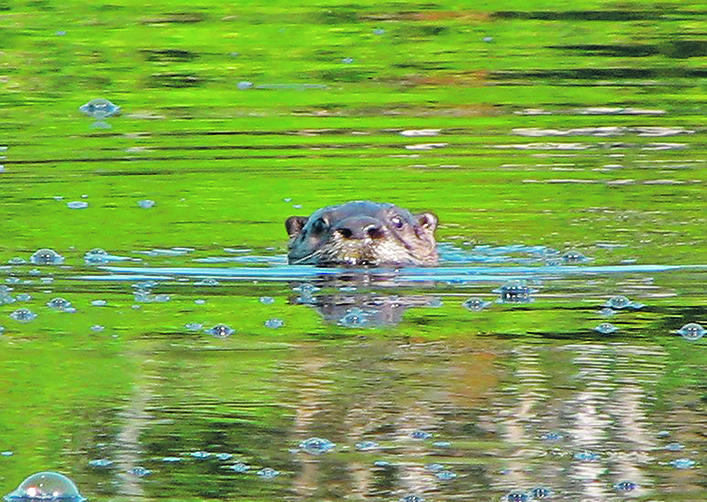
My family has had a cottage at Otter Falls on the Winnipeg River since I was young. Back then, the population was low. I don’t ever recall seeing one.
Numbers have grown impressively over the last three decades and I can now count on a few otter sightings each year. I always stop to admire their grace, power and supreme adaptation to amphibious life.
My first opportunity to get to know otters was in my early 20s, when I lived for a year in northern Manitoba. This included winter and spring trapping seasons with Cree mentors who, for some reason, decided to humour my wildly impertinent question of whether they would take me trapping with them. Much of what I learned about otter behaviour came from those mentors, with their intergenerational knowledge and deep respect for otters.
Otters were everywhere while I was there, but always at low instances — a trait that is generally true throughout their range. Sometimes we would see their trademark run-and-slide footprint across frozen lakes, but we mostly saw signs along rivers, creeks and beaver ponds where thin ice or open water gave them access to water and food through the winter.
Otters will eat land-based prey, but they lean heavily to aquatic food sources. They are superb water predators. They are thick-built but sleek, with short front legs and slightly larger hind limbs.
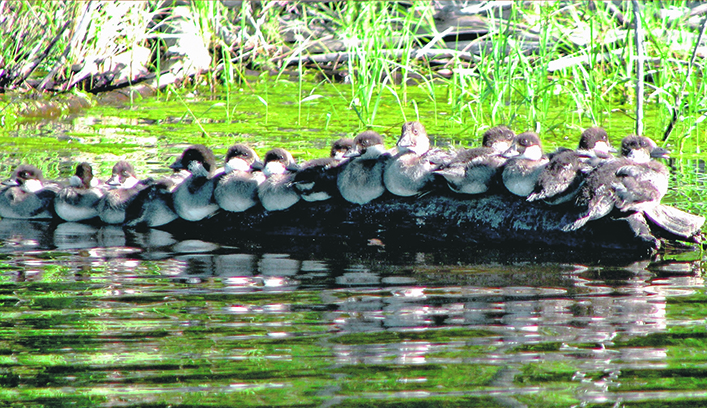
Their feet are webbed and clawed, important attributes for swimming, predatory effectiveness and being able to scratch through ice or frozen ground. The long, tapered tail is over a third of an otter’s body length and helps with propulsion and steering underwater.
Much bigger than their close cousins, the mink, adult otters average about seven kilograms and measure well over a metre from nose to tail.
They are members of the weasel family, which includes martins, skunks, badgers and wolverines. Their fur is short but thick, with dense guard hairs that extend through a wavy growth of underfur. The combination is remarkably insulating, and an oily covering keeps it waterproof.
Otter fur has always been highly valued for its lustre and durability. If I were to purchase a fur coat, it would be otter, and I would be shelling out thousands of dollars.
Studies estimate that otters consume about 10 to 15 per cent of their body weight a day in food, which is critical to their active way of life and to keep warm in winter. Fish are their most important food, but they will eat just about any animal protein. Crayfish, frogs, large insects, clams, snails, snakes and turtles are also on the menu, especially during open water.
A while back, I was able to get close to five otters feeding in a shallow weed bed. I could hear crunching as they came to the surface and rolled on their backs to munch on what I thought were crayfish. The binoculars revealed that their prey were large snails.
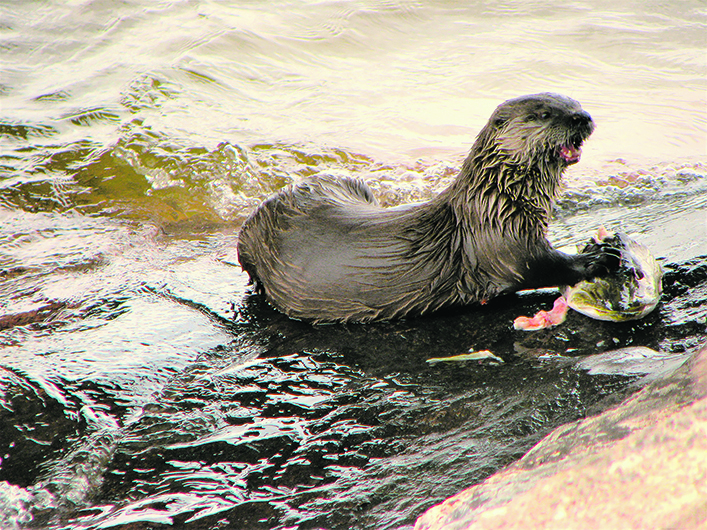
Otter scat is about the same size as a goose and is often found at the water’s edge. I’ve seen fish bones and lots of crayfish claws among the otter leavings near my cottage dock. In the winter, scat shows mostly evidence of fish.
Birds, muskrats and small land mammals may also be occasionally eaten. My trapping mentors told me that otters preyed on beavers, but biologists combing through otter scat don’t come across beaver remains that often.
When I was up north, we came across signs of otters digging into beaver lodges or dams. That could have been a prelude to attack, but it may also have been a means for otters to get under the ice. Large beavers, which may be over 20 kilograms, would likely be able to fend off otters, although smaller ones could be easy prey.
Otters are sociable animals, which is interesting because other members of the weasel family are solitary and cantankerous.
From mid-summer to fall, it’s not unusual to see family groups of up to five otters swimming, diving and feeding together. They will groom each other and may undertake playful activities like sliding down mud or snowbanks, or maybe riding a sluice of water over a beaver dam.
Adult otters will pair up and establish a den in their territory. They depend on pre-existing excavations, like a beaver bank hole, old beaver lodge or muskrat house.
Females give birth to three or four young in spring. After about 10 to 12 weeks in the den, the family enters the wider world. The male is chased away during the early stages of rearing but is often re-admitted to the clan and contributes to the latter stages of parenting. The young learn to hunt as the season progresses and the family structure will break up by spring, or even earlier.
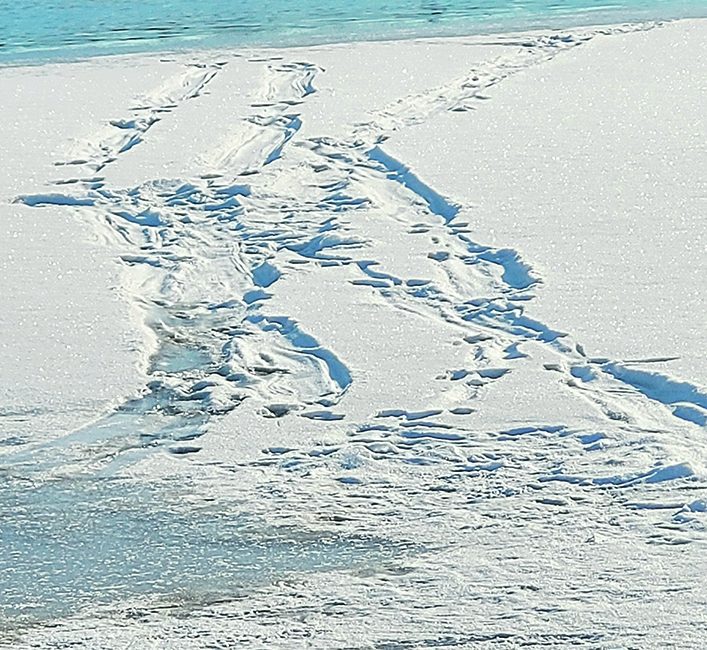
At first glance, beavers, muskrats and otters can look similar when swimming, but the plodding beavers and smaller muskrats have a predictable, barge-like silhouette. By comparison, otters gyrate about, popping above and below the water surface. The tell for an otter is that it will check its surroundings by treading water and lifting its head and neck above the water line. I call it periscoping, maybe because I watched too many U-boat movies as a kid.
While humans sometimes attract an otter’s curiosity, I have never found them that accommodating to my intrusions. If you want a close look, stay still and hope you are downwind so they don’t catch your outline or scent.
My best otter encounter occurred at the family cottage. I do my fish cleaning on the dock and pitch the remains into deep water to feed others in the ecosystem. One morning, I found the remains of a filleted skeleton on the dock, as if the lake had spit it back. The head was crunched up and the flesh between the bones was picked off.
The next morning, I came home with a nice pike and cleaned and discarded the remains as usual. A short time later, I looked down from the cottage and a big otter was on the dock with the pike head in its mouth. After its first lucky find, I guess it decided to check out the deep waters off my dock as part of its regular feeding route.
I crept out with my camera, hoping for a close-up shot. The otter saw me in no time but, deciding the pike head was too good to pass up, just moved down the shore. I was able to sneak within about 10 metres, close enough to grab some video and hear its powerful jaws splinter the pike’s skull and bones to get to the good stuff inside.
During a late-season duck hunt in my favourite wild rice marsh, I heard and then saw three otters advancing through a skim of ice that had formed in the rice fields and, as luck would have it, they swam right by my blind.
I had shot a grand total of one duck that morning, and it was floating among my decoys, looking a little vulnerable. The otters were indifferent to my plastic decoys, but they scented the duck. It was quickly appropriated by the biggest one, which swam to a nearby muskrat lodge for breakfast. I had one less duck for the table, but an otter encounter in return. Not a bad trade.
While otters have disappeared where development is intensive or surface waters are heavily polluted, they persist in less impacted areas. The main limitation in our region, other than loss of habitat, is rivers and lakes with muddy waters, because otters hunt by sight.
A couple of years ago, summer flows were very low in the Red River and the water cleared up more than usual. I could see down more than a metre, over double the normal depth.
Apparently it was clear enough for otters. I spotted a family group of five feeding below the Lockport dam. I hadn’t seen them before or since.
Otters have adapted to humans in less developed areas and it looks like they will continue to be a special outdoors encounter for anyone who watches for them.
Tim Sopuck is the former head of the Manitoba Habitat Heritage Corporation, now known as the Manitoba Habitat Conservancy.



